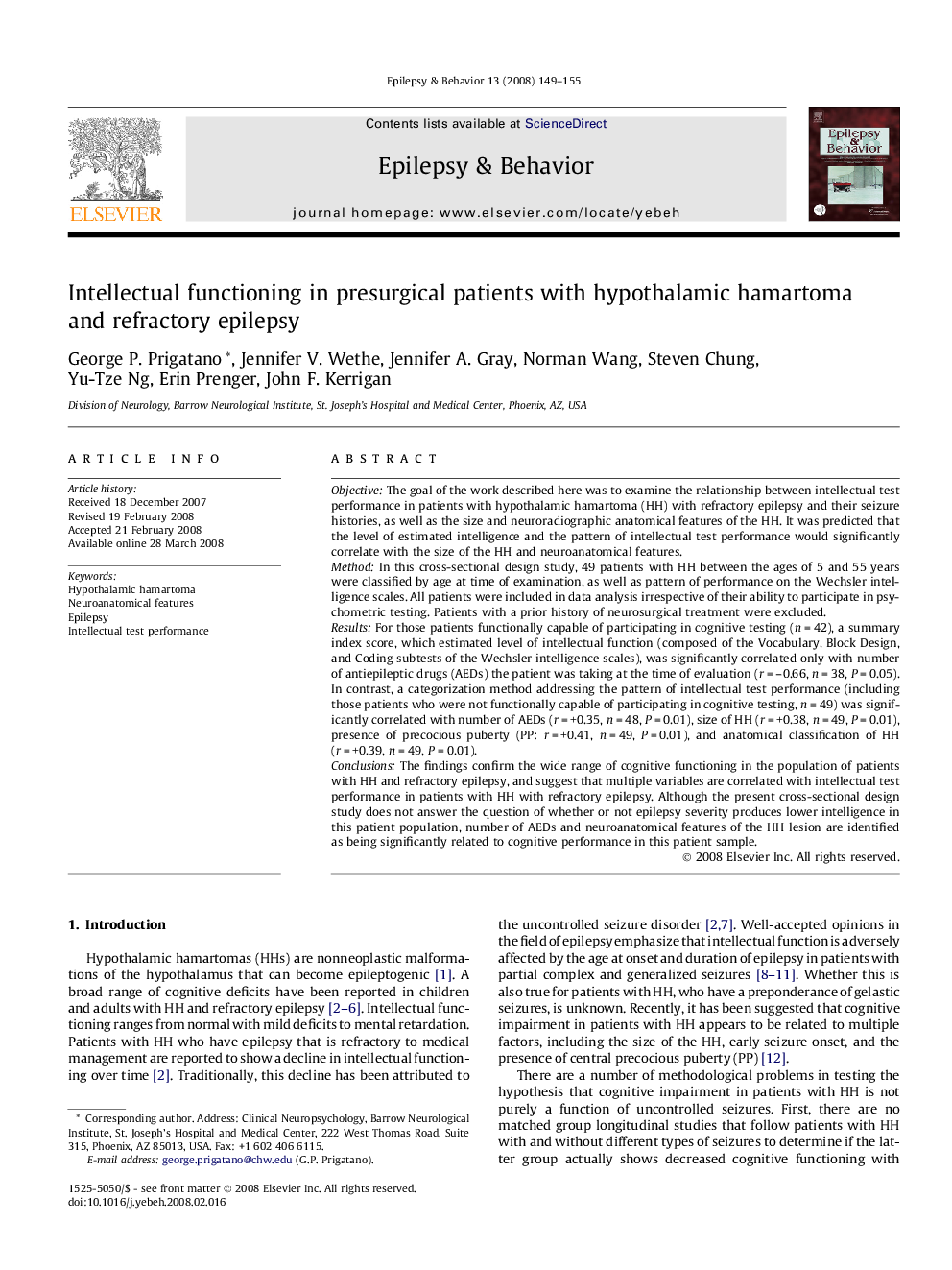| Article ID | Journal | Published Year | Pages | File Type |
|---|---|---|---|---|
| 3050951 | Epilepsy & Behavior | 2008 | 7 Pages |
ObjectiveThe goal of the work described here was to examine the relationship between intellectual test performance in patients with hypothalamic hamartoma (HH) with refractory epilepsy and their seizure histories, as well as the size and neuroradiographic anatomical features of the HH. It was predicted that the level of estimated intelligence and the pattern of intellectual test performance would significantly correlate with the size of the HH and neuroanatomical features.MethodIn this cross-sectional design study, 49 patients with HH between the ages of 5 and 55 years were classified by age at time of examination, as well as pattern of performance on the Wechsler intelligence scales. All patients were included in data analysis irrespective of their ability to participate in psychometric testing. Patients with a prior history of neurosurgical treatment were excluded.ResultsFor those patients functionally capable of participating in cognitive testing (n = 42), a summary index score, which estimated level of intellectual function (composed of the Vocabulary, Block Design, and Coding subtests of the Wechsler intelligence scales), was significantly correlated only with number of antiepileptic drugs (AEDs) the patient was taking at the time of evaluation (r = –0.66, n = 38, P = 0.05). In contrast, a categorization method addressing the pattern of intellectual test performance (including those patients who were not functionally capable of participating in cognitive testing, n = 49) was significantly correlated with number of AEDs (r = +0.35, n = 48, P = 0.01), size of HH (r = +0.38, n = 49, P = 0.01), presence of precocious puberty (PP: r = +0.41, n = 49, P = 0.01), and anatomical classification of HH (r = +0.39, n = 49, P = 0.01).ConclusionsThe findings confirm the wide range of cognitive functioning in the population of patients with HH and refractory epilepsy, and suggest that multiple variables are correlated with intellectual test performance in patients with HH with refractory epilepsy. Although the present cross-sectional design study does not answer the question of whether or not epilepsy severity produces lower intelligence in this patient population, number of AEDs and neuroanatomical features of the HH lesion are identified as being significantly related to cognitive performance in this patient sample.
